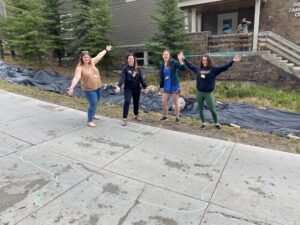Integrating indigenous perspectives into elementary teaching

By Liliane Dionne, Diane Campeau and Makwa Atisokan
Recent reports from the Intergovernmental Panel on Climate Change (IPCC) and many scientific bodies have concluded that the increase in extreme weather events has been caused by our use of fossil fuels. To reduce those emissions – and our environmental footprint – we need to change our lifestyle. In our view, integrating Indigenous perspectives into environmental education is one of the keys to accomplishing this and ensuring a more sustainable future.
The focus of this article is to improve science and environmental teaching practices in grades K-8 by integrating inspiring methods from Indigenous studies. Long before the Europeans colonized North America, Indigenous communities were successful keepers of Turtle Island. It is time to honor and respect this traditional knowledge. In this article, we present fundamental concepts that govern the introduction of Indigenous perspectives. We also share some teaching practices for their successful integration in the classroom. But our aim is to support the creativity of teachers to implement environmental education with Indigenous dimensions. To help illustrate these guiding principles, we include a fourth-grade activity about the moose, a sacred animal for the Anishinabek people.
This content is restricted to subscribers only.
If you are not yet a subscriber, please consider taking out a subscription here.
If you are an existing subscriber, kindly log in or contact us at info@greenteacher.com for more information.










